people
 Anyone who knows much about Nazi Germany, knows that Adolf Hitler was insane. His hatred for the Jewish people was nothing less that insanity, because he had no valid reason to hate them. Nevertheless, the Holocaust did happen. Hitler did kill between five and six million Jews during his reign of terror. Many people thought that the Jews were the only target Hitler had too, but that wasn’t so. Hitler wanted to kill anyone who annoyed, inconvenienced, or even remotely bothered him. On this day, July 8, 1943, upon the German army’s invasion of Pskov, 180 miles from Leningrad, Russia, the chief of the German army general staff, General Franz Halder, records in his diary Hitler’s plans for Moscow and Leningrad: “To dispose fully of their population, which otherwise we shall have to feed during the winter.” Hitler planned to level both cities, or at least kill everyone in them, because he didn’t want to have to feed the prisoners during the long winter months! And for no other reason. Most armies at least set up prisoner of war camps, which while not terribly humane, gave some semblance of an attempt to be humane. I know that everyone complains about how the United States treats prisoners of war, but there really is no comparison, when you view the way Hitler and some other terrible dictators treat prisoners of war. Humane treatment is a pipe dream for prisoners of dictators.
Anyone who knows much about Nazi Germany, knows that Adolf Hitler was insane. His hatred for the Jewish people was nothing less that insanity, because he had no valid reason to hate them. Nevertheless, the Holocaust did happen. Hitler did kill between five and six million Jews during his reign of terror. Many people thought that the Jews were the only target Hitler had too, but that wasn’t so. Hitler wanted to kill anyone who annoyed, inconvenienced, or even remotely bothered him. On this day, July 8, 1943, upon the German army’s invasion of Pskov, 180 miles from Leningrad, Russia, the chief of the German army general staff, General Franz Halder, records in his diary Hitler’s plans for Moscow and Leningrad: “To dispose fully of their population, which otherwise we shall have to feed during the winter.” Hitler planned to level both cities, or at least kill everyone in them, because he didn’t want to have to feed the prisoners during the long winter months! And for no other reason. Most armies at least set up prisoner of war camps, which while not terribly humane, gave some semblance of an attempt to be humane. I know that everyone complains about how the United States treats prisoners of war, but there really is no comparison, when you view the way Hitler and some other terrible dictators treat prisoners of war. Humane treatment is a pipe dream for prisoners of dictators.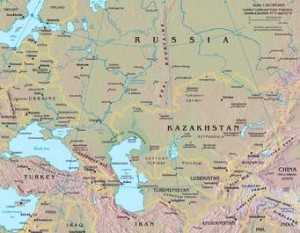
Hitler launched a massive invasion of the Soviet Union on June 22, with over 3 million men. He was highly successful, due in large part to a disorganized and unsuspecting Russian army. By July 8, they had captured 280,000 Soviet prisoners and almost 2,600 tanks were destroyed. The army was already a couple of hundred miles inside Soviet territory. Stalin was in a panic. He was so angry that he began executing generals who had failed to stop the invaders.
Halder, who was Hitler’s chief of staff, had been keeping a diary of the day-to-day decision making process. As time went on, Hitler became emboldened by his successes in Russia. Halder recorded that the “Fuhrer is firmly determined to level Moscow and Leningrad to the ground.” Halder also records the reality of Hitler’s underestimation of the Russian army’s numbers and the bitter fighting within Hitler’s own armies about strategy. Halder and some of the others wanted to make straight for the capital, Moscow. But Hitler wanted to meet up with Field Marshal Wilhelm Leeb’s army group, 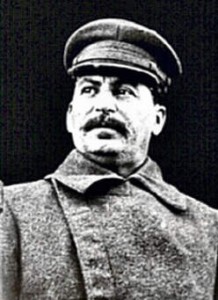 which was making its way toward Leningrad. And Hitler was, after all, in charge. But, the advantage Hitler had against the Soviets would not last very long. Winter was approaching and so was the advantage such conditions would give the Russians. The Russians were used to the severe Russian winters, and Hitler’s men were not. Like Napoleon before them, the Germans would soon find that they weren’t prepared for the Russian winter, and subsequent winters. And yet, Hitler thought he had learned from Napoleon. He ordered his troops to hold their ground. Which meant that during the Winter War, the German army was not able to pull back to more defensible positions. Consequently, the Russians were able to launch a series of counter-attacks during that first winter. These attacks cutoff some German forces, inflicted worse casualties than the Germans could inflict, but more importantly allowed the Russians to rebuild their army. The winter months proved to be just as detrimental for Hitler as they had for Napoleon. He was insane to even try such an attack.
which was making its way toward Leningrad. And Hitler was, after all, in charge. But, the advantage Hitler had against the Soviets would not last very long. Winter was approaching and so was the advantage such conditions would give the Russians. The Russians were used to the severe Russian winters, and Hitler’s men were not. Like Napoleon before them, the Germans would soon find that they weren’t prepared for the Russian winter, and subsequent winters. And yet, Hitler thought he had learned from Napoleon. He ordered his troops to hold their ground. Which meant that during the Winter War, the German army was not able to pull back to more defensible positions. Consequently, the Russians were able to launch a series of counter-attacks during that first winter. These attacks cutoff some German forces, inflicted worse casualties than the Germans could inflict, but more importantly allowed the Russians to rebuild their army. The winter months proved to be just as detrimental for Hitler as they had for Napoleon. He was insane to even try such an attack.
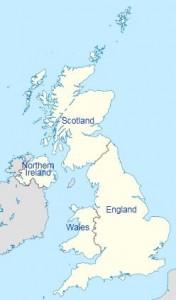 Many people may not be aware that in the United Kingdom of Great Britain, there is almost a constant state of confusion over just exactly who they are. They are considered Great Britain or the United Kingdom, but the United Kingdom takes in the countries of England, Scotland, Wales and Northern Ireland. It was on this day May 1, 1707 that England and Scotland joined together to become the United Kingdom. I think the union must have been a bit surprising, given that the English and the Scots had long battled over one thing or another. Nevertheless, The Scots needed the economic support that England could offer, while for England the merger was political. The Scots would no longer have a Parliment, but they were given instead a proportion of the seats at Westminster.
Many people may not be aware that in the United Kingdom of Great Britain, there is almost a constant state of confusion over just exactly who they are. They are considered Great Britain or the United Kingdom, but the United Kingdom takes in the countries of England, Scotland, Wales and Northern Ireland. It was on this day May 1, 1707 that England and Scotland joined together to become the United Kingdom. I think the union must have been a bit surprising, given that the English and the Scots had long battled over one thing or another. Nevertheless, The Scots needed the economic support that England could offer, while for England the merger was political. The Scots would no longer have a Parliment, but they were given instead a proportion of the seats at Westminster.
The English tend to call Great Britain, England, with notorious disregard for the feelings of the Welsh, with whom they joined in 1536 and the Scots, with whom they joined in 1707. The Act of Union of 1707, states merely that England and Scotland shall ‘be united into one kingdom by the name of Great Britain’. Many people simply lumped them together as Britain, calling all of them the Brits, which technically isn’t so…and even the English didn’t like that name. The last official merger was with Northern Ireland in 1800, at which time the enlarged kingdom became the United Kingdom of Great Britain.
It’s hard for me to think about being a country that is part of a kingdom, and yet, I suppose that is exactly what we were when the United States of America was part of England. Although we may not have been considered a part of a kingdom exactly, we were under British rule until the Revolutionary War. I suppose that there could be a love/hate relationship among the countries of the United Kingdom to this day. I do think that the British Royals do like to go to the different countries that are a part of the United Kingdom, and maybe 
 those countries like having them come for a visit now, but I have to wonder if that was always the case. Queen Elizabeth heads to her Scottish castle, Balmoral, at this time of the year, so she must love the whole Scottish countryside at least almost as much as she does England. For Queen Elizabeth, having a castle in Scotland is normal. I suppose that if you grew up being a part of a kingdom, it would be normal, and in all reality, while it wasn’t always a kingdom, it has been since 1536, so it might as well have been always…at least for the people who call the United Kingdom of Great Britain home.
those countries like having them come for a visit now, but I have to wonder if that was always the case. Queen Elizabeth heads to her Scottish castle, Balmoral, at this time of the year, so she must love the whole Scottish countryside at least almost as much as she does England. For Queen Elizabeth, having a castle in Scotland is normal. I suppose that if you grew up being a part of a kingdom, it would be normal, and in all reality, while it wasn’t always a kingdom, it has been since 1536, so it might as well have been always…at least for the people who call the United Kingdom of Great Britain home.
 My life began in Superior, Wisconsin. Superior is a small town located at the tip of Lake Superior, which is the largest of the Great Lakes. I have always felt close ties to Superior and to Wisconsin, in general, because while I have not lived there since I was three years old, it was the place of my birth, and the place where my Uncle Bill Spencer and his family lived for many years, as well as many of my great grandparents’ family.
My life began in Superior, Wisconsin. Superior is a small town located at the tip of Lake Superior, which is the largest of the Great Lakes. I have always felt close ties to Superior and to Wisconsin, in general, because while I have not lived there since I was three years old, it was the place of my birth, and the place where my Uncle Bill Spencer and his family lived for many years, as well as many of my great grandparents’ family.
In the early years of the area, the Native American Indian Tribes called it home. The first Europeans to live there were the British and French, and the American settlers who lived in Wisconsin when it was a territory. One tribe, the Meskwaki Indians were particularly hostile toward the French, but many of the Indians got along well with the pioneers. The Great Lakes area increased dramatically after the decline of the British influence following the War of 1812. This was a land with a mix of pioneers and Indians. Of course, like most areas, the Indians were eventually placed on reservations.
Like every state in the United States, Wisconsin started as a US Territory, and when there were enough people to make statehood a necessity, each one became a state. Wisconsin initially became a terriroty on this day, April 20, 1836. Initially, it included all of the present-day states of Wisconsin, Minnesota, Iowa, and part of the Dakotas east of the  Missouri River. Much of that territory was part of the Northwest Territory, which was ceded by Britain in 1783. The portion which is now the Dakotas was originally part of the Louisiana Purchase. Eventually, the states would separate their areas, leaving Wisconsin with the area it now occupies.
Missouri River. Much of that territory was part of the Northwest Territory, which was ceded by Britain in 1783. The portion which is now the Dakotas was originally part of the Louisiana Purchase. Eventually, the states would separate their areas, leaving Wisconsin with the area it now occupies.
My people would arrive in the area much later, but many of them would stay in the area of Wisconsin and Minnesota for generations, and even to this day. For me, there will always be a place in my heart for Wisconsin, especially Superior, and the Great Lakes, especially Lake Superior. It is a beautiful area that my family has called home for generations, and I will always love it.
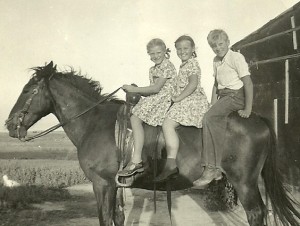 It’s strange that you can look at pictures of people in your family’s history, and somewhere in the back of your mind, you know the names connect, but somehow you don’t connect the people to their parents. While looking through some of the old family pictures from my mother-in-law, Joann Knox Schulenberg’s family, I found pictures of her as a little girl, with two other children, a boy and a girl, who I found out were Richard and Mary Ann Batey. The Batey kids were my mother-in-law’s cousins, and I knew that, but somehow I didn’t connect them with their mother, Bernice Noyes Batey, who I met as an older woman. Then again, I have never met the Batey siblings at all, so maybe that is why they didn’t really connect in my mind. Bernice Batey was my mother-in-law’s mother, Nettie Noyes Knox’s sister, and I did meet her a couple of times. She was a very nice lady, and very sweet, but when you don’t meet the kids at the same time, it can be hard to make the connection. Somehow, the kids end up slipping into that obscure area of almost unknown relatives…until you think about those relationships for a few minutes.
It’s strange that you can look at pictures of people in your family’s history, and somewhere in the back of your mind, you know the names connect, but somehow you don’t connect the people to their parents. While looking through some of the old family pictures from my mother-in-law, Joann Knox Schulenberg’s family, I found pictures of her as a little girl, with two other children, a boy and a girl, who I found out were Richard and Mary Ann Batey. The Batey kids were my mother-in-law’s cousins, and I knew that, but somehow I didn’t connect them with their mother, Bernice Noyes Batey, who I met as an older woman. Then again, I have never met the Batey siblings at all, so maybe that is why they didn’t really connect in my mind. Bernice Batey was my mother-in-law’s mother, Nettie Noyes Knox’s sister, and I did meet her a couple of times. She was a very nice lady, and very sweet, but when you don’t meet the kids at the same time, it can be hard to make the connection. Somehow, the kids end up slipping into that obscure area of almost unknown relatives…until you think about those relationships for a few minutes.
That is exactly what happened with my mother-in-law’s cousins. For a time, I didn’t know those kids were even related at all, until my sisters-in-law told me they were. Then, I just didn’t connect their last name to anyone in particular. Finally, I was looking at a picture of Bob’s grandma, Nettie Knox, with her sister, Bernice Noyes Beaty…who I had always known as Bernice Beaty, it connected. Wow!! These kids were Berniece’s kids. Ok, sometimes I can be a little slow to connect these relationships, but now it became clear just exactly where they fit in.
Family connections are complicated, and even the best genealogy expert could have problems making the connections. Although, maybe if you weren’t  involved as a family member, you would be able to see the relationships clearly. Maybe, you wouldn’t have any pre-conceived idea of where people fit into a family line, if you weren’t somehow emotionally involved with the family.
involved as a family member, you would be able to see the relationships clearly. Maybe, you wouldn’t have any pre-conceived idea of where people fit into a family line, if you weren’t somehow emotionally involved with the family.
I definitely feel a little bit closer to the Noyes side of the family now that I have figured out the connections. I remember meeting Bernice, and thinking that she was such a sweet lady, but then she was Bob’s grandmother’s sister, so being sweet would be right in line with the way the whole family was. I do wish I had known the kids who were such good friends, as well as cousins of my mother-in-law. I’m sure I would have liked them very much too.
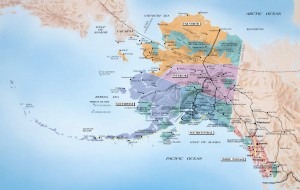 Until recently, I had never given much thought to historic events concerning Alaska. It wasn’t that I wasn’t interested, but rather that other places occupied my mind. Nevertheless, with the recent trip Bob and I took, Alaska has found a place in my mind and heart. Does that mean I have the Alaska Bug…well maybe, because if you offered me a free trip, I would be there with bells on. That said, I noticed the fact that today is a hugely significant day in Alaska’s history. Alaska became a state on December 7, 1959, the 50th state, Hawaii joined the union on August 21, 1959. It is very strange to think that it took almost 172 years to acquire all 50 states, and the final two joined within my lifetime. In our minds, we rather expect that all the states would have been within the first hundred years of each other, but such was not the case at all. Nevertheless, all but two states were within the first 125 years, with only the last two joining 47 years later.
Until recently, I had never given much thought to historic events concerning Alaska. It wasn’t that I wasn’t interested, but rather that other places occupied my mind. Nevertheless, with the recent trip Bob and I took, Alaska has found a place in my mind and heart. Does that mean I have the Alaska Bug…well maybe, because if you offered me a free trip, I would be there with bells on. That said, I noticed the fact that today is a hugely significant day in Alaska’s history. Alaska became a state on December 7, 1959, the 50th state, Hawaii joined the union on August 21, 1959. It is very strange to think that it took almost 172 years to acquire all 50 states, and the final two joined within my lifetime. In our minds, we rather expect that all the states would have been within the first hundred years of each other, but such was not the case at all. Nevertheless, all but two states were within the first 125 years, with only the last two joining 47 years later.
Alaska was first discovered in 1741 when a Russian expedition led by a Danish navigator named Vitus Bering sighted the Alaskan mainland. Before long Russian hunters were making trips into Alaska, and their presence wreaked havoc on the Aleutian people, who had been relatively disease free prior to their exposure to foreign diseases. The first permanent Russian colony in Alaska was established on Kodiak Island in 1784 by Grigory Sheliknov. Settlements spread across the west coast of North America during the 19th century, with the southernmost fort located near Bodega Bay in California. By the 1820’s, the Russians were spending less and less time in the new world, and the British and Americans were allowed to trade in Alaska…after a few diplomatic conflicts. By the 1860s, Russia was nearly bankrupt, and so they decided to offer Alaska for sale to the United States, because they had expressed an interest earlier. The purchase took place on March 30, 1867  when Secretary of State William H Seward…I wondered where some of the names came from…signed the agreement and the United States purchased Alaska for 7.2 million…which was about two cents an acre…quite a deal really. Nevertheless, the purchase was ridiculed by Congress and the place was called “Seward’s Folly”, “Seward’s Icebox”, and President Andrew Johnson’s “polar bear garden” for some time. Still, the Senate ratified the purchase of this vast land that measured one fifth of the size of the continental United States.
when Secretary of State William H Seward…I wondered where some of the names came from…signed the agreement and the United States purchased Alaska for 7.2 million…which was about two cents an acre…quite a deal really. Nevertheless, the purchase was ridiculed by Congress and the place was called “Seward’s Folly”, “Seward’s Icebox”, and President Andrew Johnson’s “polar bear garden” for some time. Still, the Senate ratified the purchase of this vast land that measured one fifth of the size of the continental United States.
Settlement of the new territory was very slow. It seemed that people didn’t feel comfortable about this cold, desolate wilderness, where the sun didn’t act like it did in the rest of their world. Nevertheless, all their apprehension was quickly forgotten with the discovery of gold in 1898. People moved to Alaska in droves to try to make their fortune. In my travels to Alaska, I had the opportunity to watch a movie about the Klondike Gold Rush. While people did find gold, it came at a heavy price, and many people paid the ultimate price. This land was an unforgiving place. Those who were not prepared for it’s harshness, soon found out what it took to live there, and not everyone could do so. It didn’t make them less manly, it just wasn’t for everyone…gold or no gold.
Still, those people who came to Alaska and felt an instant connection, knew in their hearts that this harsh, vast wilderness had somehow gotten into their blood. That is how Alaskans feel about their state to this day. Not everyone is cut out for it, and they do have a tendency to laugh and joke a bit about the light weights who go home, but they also understand that the ones who stay are a bit of a rare breed. In years gone by, we would have called them Mountain Men, and I suppose that fits the early Alaskan people, but by the same token, they would not have made it either, had it not been for the wisdom of the Aleutian people concerning their health. There weren’t all kinds of things like antibiotics, and immune system boosters then. And fruits and such were not plentiful either. But the Aleutian people knew of ways to get vitamin C and other things to prevent disease.  Even so, at that time, people did not stay permanently in Alaska. They summered there. Many people still do. They just don’t like the winters there. And yet, if you look, there are areas of Alaska…along the coast, like Anchorage that is actually warmer than places like Chicago. Of course, the interior just doesn’t fall into the warm category, with temperatures reported as low as -65° is some places. I think I might want to get out of there for the winter too. Nevertheless, Alaska is an amazing state, and one that I would love to visit again. Not only is it big in size, but everything there seems huge. The mountains are amazing, and the glaciers awe inspiring. If you ever get the chance to visit our 49th state, it is a trip you will never forget…believe me.
Even so, at that time, people did not stay permanently in Alaska. They summered there. Many people still do. They just don’t like the winters there. And yet, if you look, there are areas of Alaska…along the coast, like Anchorage that is actually warmer than places like Chicago. Of course, the interior just doesn’t fall into the warm category, with temperatures reported as low as -65° is some places. I think I might want to get out of there for the winter too. Nevertheless, Alaska is an amazing state, and one that I would love to visit again. Not only is it big in size, but everything there seems huge. The mountains are amazing, and the glaciers awe inspiring. If you ever get the chance to visit our 49th state, it is a trip you will never forget…believe me.
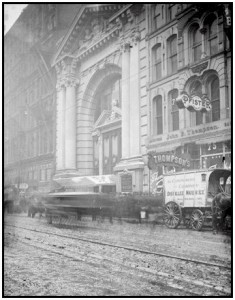 Every day, we benefit from safety measures that have been put in place as a result of a need, or more often a tragedy, that occurred in the past. We give very little thought to things like fire drills, earthquake drills, or even the fire extinguisher on the wall in buildings. We don’t normally think about the fire exit, unless we are looking for the way out of a building and find that this exit is only to be used in case of a fire. I suppose that the reason we don’t think of these things is that we expect the place we are in to be a safe place. There are regulations surrounding the public use of buildings that require that the building meet a certain standard of safety, and most often they do…these days anyway.
Every day, we benefit from safety measures that have been put in place as a result of a need, or more often a tragedy, that occurred in the past. We give very little thought to things like fire drills, earthquake drills, or even the fire extinguisher on the wall in buildings. We don’t normally think about the fire exit, unless we are looking for the way out of a building and find that this exit is only to be used in case of a fire. I suppose that the reason we don’t think of these things is that we expect the place we are in to be a safe place. There are regulations surrounding the public use of buildings that require that the building meet a certain standard of safety, and most often they do…these days anyway.
These safety lessons were not so pleasant to learn for those who came before us and who didn’t survive. Such was the case on December 30, 1903, when the Iroquois Theater in Chicago caught fire and killed 602 people, 572 inside the theater, with the rest dying of the injuries received in the fire. That total included 212 children. You see, the Iroquois Theater was hosting hundreds of adults and school children to a Holiday performance of a play starring the popular comedian, Eddie Foy. The sad thing is that the theater was thought to be fireproof. In reality it was a deathtrap, due to so many safety violations. As a result, the lives of many families were devastated. As I looked at the list of victims, I can’t say that I ran across any I knew to belong in my family tree, but I could be wrong on that too. My family and that of my husband, Bob, spent a lot of time in the Great  Lakes area, so it is entirely possible that my own family lost people due to this tragedy as well.
Lakes area, so it is entirely possible that my own family lost people due to this tragedy as well.
These days, our children think nothing of a fire alarm going off in school. They have several of them a year. when the alarm goes off, they simply follow their training and line up to leave the building. If there were a fire, they would most likely not know it until they were not allowed to go back into the building. Children in earthquake prone areas at taught exactly what to do if the room starts shaking, and they respond automatically, often saving their lives.
The problem with the Iroquois Theater fire, was as simple as the problem with the Titanic. People didn’t think the building could possible burn, or the ship sink. The Iroquois Theater was only open five weeks before it’s total destruction. As a result, lives were lost. In my reading of this tragedy, I found that while the architect wanted every possible safety measure taken, costs had been cut and therefore, the fireproof theater everyone thought they were in, simply did not exist. The theater was over crowded by 400 people, at 2,000 people in a theater designed to hold 1,600. They stairway to the fire escape hadn’t been finished yet. exit doors had been designed to be pulled open, and with the crowd of fear stricken people, the press was to much, and the escape, completely blocked. Iron gates closing off some of the stairways were locked, and people tried jumping out the window…to their deaths unfortunately. In some  places the bodies were stacked 10 high with people attempting to crawl over each other to get out. In desperation the fire department set up a bridge of sorts to get people out. Some got out, some didn’t.
places the bodies were stacked 10 high with people attempting to crawl over each other to get out. In desperation the fire department set up a bridge of sorts to get people out. Some got out, some didn’t.
I don’t know why we humans always seem to think that something we build could be indestructible, when in reality, much of what we build is, in one way or another, flawed. I think that one of the best things we can do for our families, is to make sure they all know how to get out of a building safely. We can hope that the architect, contractor, workers, and inspectors all did their job properly, but we must remember that they are only human too, and mistakes can be made. If people know not to panic, they can get out safely more times than not, but panic…most often results in tragedy. And that is what happened in the Iroquois Theater in Chicago on December 30, 1903…panic and a complete disregard for the elementary rules of safety.
 My grand nephew, Isaac Spethman is the youngest son and middle child of my niece Jenny and her husband Steve Spethman. Isaac has always been a very motivated kid. He knew that there were going to be things he wanted and needed, and he was determined to get them for himself. With that in mind, Isaac decided that he needed a job. It was a good decision for a young man to make, as much of their adult life is spent being the bread winner, or at least half of the family bread winning team.
My grand nephew, Isaac Spethman is the youngest son and middle child of my niece Jenny and her husband Steve Spethman. Isaac has always been a very motivated kid. He knew that there were going to be things he wanted and needed, and he was determined to get them for himself. With that in mind, Isaac decided that he needed a job. It was a good decision for a young man to make, as much of their adult life is spent being the bread winner, or at least half of the family bread winning team.
Since Isaac understood that concept, he set out to see what jobs a young man without a vehicle could find to do. The first thing he decided was that he needed to find a job that was nearby, and right across the street was the Grant Street Grocery store. Isaac figured that was a good a place to start as any, so he went over and asked for a job. I think the owner thought he was joking, and so he didn’t really take him seriously, but Isaac kept asking. Finally the owner said, “Well,  bring me your résumé.” Being a young man, he had no idea what that was all about, but his aunt, Liz Masterson is a teacher, so he knew exactly who to go to for information on it.
bring me your résumé.” Being a young man, he had no idea what that was all about, but his aunt, Liz Masterson is a teacher, so he knew exactly who to go to for information on it.
When Isaac approached Liz, he told her that he needed a résumé. Liz was a little confused, because you see Isaac was just a little young for a job…or so Liz thought. She explained that a résumé was a letter telling of your job history and work experience. Isaac insisted that he have one, so Liz wrote it up. On the résumé she listed things like playing well with his brothers, taking out the trash, making his bed and cleaning his room, as well as miscellaneous assistance for his mom and dad, and other chores. It wasn’t much of a work history but it would have to do, because this was going to be his first job.
Isaac was so proud of his résumé. He took it, headed straight over to Grant Street Grocery and handed it to them. I guess they finally understood that he really wanted the job, because they hired him on the spot. He even had to have work boots…a hard thing to find. Isaac did all kinds of work, from sweeping up to taking out the trash, and even learning about the cuts of meat. He  made a little bit of money each time he worked, but it wasn’t minimum wage, because you see Isaac was only six years old. It’s never too early to teach your children good work ethics, but in Isaac’s case, other than teaching him to do his chores, his parents didn’t really have to teach him anything, because he sort of taught himself. True, Jenny and Steve are hard working people, and leading by example is always the easiest way to teach people the right way, but who ever thought it would work so well with their young son, but it did, and Isaac now has his first job under his belt, even if it wasn’t for minimum wage, and the next time he needs a résumé, he will have one more job to add to it. Today is Isaac’s 8th birthday. Happy birthday Isaac!! Have a great day!! We love you bunches…now get back to work!!
made a little bit of money each time he worked, but it wasn’t minimum wage, because you see Isaac was only six years old. It’s never too early to teach your children good work ethics, but in Isaac’s case, other than teaching him to do his chores, his parents didn’t really have to teach him anything, because he sort of taught himself. True, Jenny and Steve are hard working people, and leading by example is always the easiest way to teach people the right way, but who ever thought it would work so well with their young son, but it did, and Isaac now has his first job under his belt, even if it wasn’t for minimum wage, and the next time he needs a résumé, he will have one more job to add to it. Today is Isaac’s 8th birthday. Happy birthday Isaac!! Have a great day!! We love you bunches…now get back to work!!

 My husband, Bob Schulenberg, likes to laugh. From the time he was just a little kid, it seems that in a crowd of smiling people, there would always be one, who had to laugh, because somehow, a smile just did really express his true feelings about whatever was said, or what someone did. He really finds it hard not to laugh if something is the least bit funny. This was one of the things that I liked the most about Bob right from the start. He has a great sense of humor, and is a teaser from way back. I can’t say that his sisters always liked that aspect of their oldest brother, but it was a part of their childhood, nevertheless. Like so many boys, Bob’s humor as a young boy was not always shared by his sisters, who thought he really should just leave them alone.
My husband, Bob Schulenberg, likes to laugh. From the time he was just a little kid, it seems that in a crowd of smiling people, there would always be one, who had to laugh, because somehow, a smile just did really express his true feelings about whatever was said, or what someone did. He really finds it hard not to laugh if something is the least bit funny. This was one of the things that I liked the most about Bob right from the start. He has a great sense of humor, and is a teaser from way back. I can’t say that his sisters always liked that aspect of their oldest brother, but it was a part of their childhood, nevertheless. Like so many boys, Bob’s humor as a young boy was not always shared by his sisters, who thought he really should just leave them alone.
From cartoons, as a little boy and even into the early years of our marriage, to “The Three Stooges” and “Laurel and Hardy”, to comedies of today, television has been a source of entertainment bringing much laughter for Bob. He can be sitting in a room all by himself, and suddenly he just bursts out in loud laughter, because something on the show struck him as very funny. Oh don’t get me wrong, I’m sure the rest of us would have thought it funny too, but it is just so funny to hear Bob burst out laughing in the other room, when you have no idea what is so funny. That makes no difference really, because it is what is funny to him that matters, not what is funny to those around him.
Bob has always been the kind of person who finds humor all around him. And looking back at all the pictures of him as a kid, I can see that is true. Not to mention, that I have heard all the stories of Bob’s antics…especially the ones his sisters didn’t find very funny. From chasing his sister, Jennifer Parmely with spiders…which he still tries to do these days too, but then thinks better of the plan…mostly because he wants to live, to goofing of with his sister, Brenda Schulenberg, during family pictures, to the point where his dad just about had to knock them silly, Bob is known for stirring things up a bit…not is a bad way, but as a boy, it was a way that his sisters didn’t always appreciate. Of course, I think they would all agree now, that he has always been a comical guy.

 They say, laughter is the best medicine, and for Bob, I think it has always been something that has made his life…and mine…a happy one. Life has it’s ups and downs. No one can get by with no sadness in their life. Those things are what makes the need for laughter such a big need, and Bob has always found humor in the simple things around him. It is probably the one biggest asset that he has. I have been blessed to be married to him all these years, so I can say that in our house, never a day goes by without a bit…or a lot…of laughter. Even if we don’t always know exactly what is so funny.
They say, laughter is the best medicine, and for Bob, I think it has always been something that has made his life…and mine…a happy one. Life has it’s ups and downs. No one can get by with no sadness in their life. Those things are what makes the need for laughter such a big need, and Bob has always found humor in the simple things around him. It is probably the one biggest asset that he has. I have been blessed to be married to him all these years, so I can say that in our house, never a day goes by without a bit…or a lot…of laughter. Even if we don’t always know exactly what is so funny.
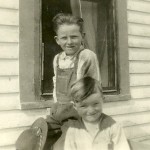 Opinions vary on the matter of child labor, and who can legally have their child work and at what kind of job. Some people take it to the point of saying that children shouldn’t even do chores around the home, which is, in my opinion, silly. It is my thought that children need to be helping out around the house, but beyond that I suppose the water gets a little bit murky. In the distant past, children were farmed out to spend their days working at a job that should have been done by an adult, and the kids really had no childhood to speak of. That is cruel treatment, and the current child labor laws prevent that from happening…unless people are so illegal that they do it without the knowledge of the government.
Opinions vary on the matter of child labor, and who can legally have their child work and at what kind of job. Some people take it to the point of saying that children shouldn’t even do chores around the home, which is, in my opinion, silly. It is my thought that children need to be helping out around the house, but beyond that I suppose the water gets a little bit murky. In the distant past, children were farmed out to spend their days working at a job that should have been done by an adult, and the kids really had no childhood to speak of. That is cruel treatment, and the current child labor laws prevent that from happening…unless people are so illegal that they do it without the knowledge of the government.
That said, there is a group of kids…even today that do work every day, and it is not illegal at all. These are the children of farmers and ranchers. I don’t know of any of those kids who don’t help out around the farm or ranch. There are stables to be cleaned, and cows to be milked, and animals to feed. There are also crops to be cared for and planted. These kids work and there is nothing illegal about it. Of course, their parents do have to 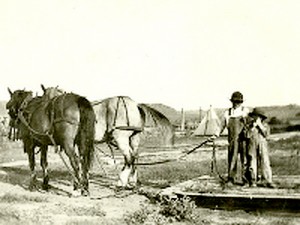 be careful on a few matters. The children must get their schooling, and they have to be working on the parents farm or ranch.
be careful on a few matters. The children must get their schooling, and they have to be working on the parents farm or ranch.
Such was the case for my husband’s great uncles and his grandfather. Many people owned farms when those boys were young, and the kids helped out with just about everything. Most families back then really couldn’t afford to hire the amount of workers that it would take to run the place, so they hired what they had to, and the kids learned to work. I really can’t say that I think this is a bad thing. The kids often like the work…especially taking care of horses…since they often get to ride them too.
If you look back on the lives of our parents and grandparents, you will find that many of them grew up on a farm or ranch, and most of them were working to help out on the place at a very young age. Really, what a wonderful way to bond with the parents. Running a ranch or farm is a big job, and most kids like to do the things their parents are doing, because they want to be just like their parents. If a child is interested in doing the same kind of work their parents do, or take over the family farm, they need to know how to do this from the bottom up. What better way could there be, than to help out as a child.

Of course, not every family owns a farm or ranch, and while they may live in the country, they don’t have that kind of work to do. Still, the kids can and should help out with things. My nephew, Barry Schulenberg, loved helping his grandpa split firewood. He ran the splitter while his grandpa loaded the wood into it. Barry was about 4 years old, but you couldn’t have pulled him away from that job for anything. He was the one who did that, and that was all there was to it. Maybe some people would think he was a bit young, but there was never a single accident when he worked the splitter. I think sometimes we don’t give these kids enough credt. They can often do more than we think they can. They just need to be given a chance.
 As the 25th anniversary of the Loma Prieta earthquake arrives, I am reminded of the time spent watching the footage of the aftermath. At that time, I had never been to California, and so I didn’t quite understand what I was seeing…but my parents knew. They had been there several times. They kept saying that a lot of people were probably dead on the Oakland Bay Bridge. As I looked at the pictures, and heard the reporter mistakenly describe the bridge, as simply collapsed, so I just didn’t get it. My parents kept saying, “That is a double road…don’t they understand that?” I guess they didn’t…and I didn’t either. They finally told me that it was a double deck bridge. Then I got it…in every sickening detail, I got it. People were trapped under tons of metal and concrete. Maybe their cars could have saved them, but it was doubtful. That was just too much weight. In the end, only one person was killed on the Oakland Bay bridge, because it was closed for retrofitting. The people on The Nimitz Expressway…also a double deck bridge, at the Cypress Street Viaduct, were not so lucky. That bridge also collapsed and when it did, it killed 42 of the total of 67 people killed in the Earthquake.
As the 25th anniversary of the Loma Prieta earthquake arrives, I am reminded of the time spent watching the footage of the aftermath. At that time, I had never been to California, and so I didn’t quite understand what I was seeing…but my parents knew. They had been there several times. They kept saying that a lot of people were probably dead on the Oakland Bay Bridge. As I looked at the pictures, and heard the reporter mistakenly describe the bridge, as simply collapsed, so I just didn’t get it. My parents kept saying, “That is a double road…don’t they understand that?” I guess they didn’t…and I didn’t either. They finally told me that it was a double deck bridge. Then I got it…in every sickening detail, I got it. People were trapped under tons of metal and concrete. Maybe their cars could have saved them, but it was doubtful. That was just too much weight. In the end, only one person was killed on the Oakland Bay bridge, because it was closed for retrofitting. The people on The Nimitz Expressway…also a double deck bridge, at the Cypress Street Viaduct, were not so lucky. That bridge also collapsed and when it did, it killed 42 of the total of 67 people killed in the Earthquake.
The day was October 17, 1989, the first game of the World Series was being played right there in San  Francisco at Candlestick Park between the two local teams…The Oakland Athletics and the San Francisco Giants. The people in the area were very excited and baseball was the only thing on their minds. The game was to start at 5:30pm, but that was not to be. The earthquake rated a magnitude 7.1 struck at 5:04pm. Game day would have to wait. Today, it was all hands on deck. And the first question on everyone’s mind was, “Is my family safe?” In that moment, all thought of baseball stopped, and everyone’s mind was on finding the victims…and, hopefully finding them alive.
Francisco at Candlestick Park between the two local teams…The Oakland Athletics and the San Francisco Giants. The people in the area were very excited and baseball was the only thing on their minds. The game was to start at 5:30pm, but that was not to be. The earthquake rated a magnitude 7.1 struck at 5:04pm. Game day would have to wait. Today, it was all hands on deck. And the first question on everyone’s mind was, “Is my family safe?” In that moment, all thought of baseball stopped, and everyone’s mind was on finding the victims…and, hopefully finding them alive.
I can’t say that I knew anyone who lived through the earthquake, nor anyone who died in it, but rather what I felt was how it impacted my parents at that time. I also felt that same impact on me when I visited San Francisco a few years later. I don’t think you can know an area where people were killed in an earthquake, or even visit that place and not feel something…not if you knew or remember the disaster that happened in that place. San Francisco is a beautiful place, with so much to see, but it is also a sad place where, over the years, the San Andreas fault has exploded over and  over again, leaving in its wake, the bodies of its victims…and the shattered lives of their families. I suppose there are people who can go there, and give no thought to that historical fact, but I am not one of those people. I think there are places when the memories of tragedies in the past lingers in an almost physical way. The ground becomes almost hallowed, deserving of respect for those who died there. Lives with so much promise, people with so much to live for, were wiped out in just 15 seconds…the 15 seconds that the earthquake was happening. That was all it took…just 15 seconds, and they were gone. That was 25 years ago today, and when I think of all the contributions those people could have made to the world, it makes me very sad indeed.
over again, leaving in its wake, the bodies of its victims…and the shattered lives of their families. I suppose there are people who can go there, and give no thought to that historical fact, but I am not one of those people. I think there are places when the memories of tragedies in the past lingers in an almost physical way. The ground becomes almost hallowed, deserving of respect for those who died there. Lives with so much promise, people with so much to live for, were wiped out in just 15 seconds…the 15 seconds that the earthquake was happening. That was all it took…just 15 seconds, and they were gone. That was 25 years ago today, and when I think of all the contributions those people could have made to the world, it makes me very sad indeed.

